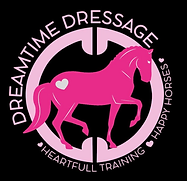Developing harmony through self carriage
- Ash Kendall

- May 19, 2018
- 2 min read
Updated: Oct 3, 2025
Picture riding in harmony: your horse coming through from behind, ears attentive, light on the rein and carrying himself without relying on you.
Self-carriage takes time and disciplined training, but it improves a horse mentally and physically. It’s a goal for any serious rider, not just dressage competitors. All horses and disciplines benefit when a horse learns to carry himself. How well he does depends largely on your position in the saddle and the way you train him.
What is self-carriage?
The horse works from behind, balanced and carrying himself in a light frame.
Movement is rhythmical and consistent — each step mirrors the last.
It’s a sign of quality training regardless of discipline.
Rider position matters
A rider who lacks balance or sits heavy disrupts the horse’s natural way of going.
Assess your seat: are your legs long with weight in the heel? Is your core engaged and light?
Flaws in your position will impair your horse’s performance. Don’t focus only on the horse — refine your own position first.
Young-horse riders often ride ‘secure’ to stay on, but as the horse matures you’ll need a more refined seat to progress.
Learning to let go
Many riders prevent self-carriage by not trusting the horse to carry himself.
Training requires constant, clear communication: ask for the frame, then soften and reward the correct response. Repeat patiently.
Avoid holding the horse in a frame or allowing him to lean on the bit. Gear or a steady hand can create an illusion of roundness but won’t replace patient schooling that builds true strength and balance.
Trust your training. Give the horse time, accept the messiness during the learning phase, and reward efforts with pats and rest breaks as he develops the strength to work independently.
The payoff
True self-carriage takes time but is deeply rewarding. When your give-and-take becomes subtle and the horse sustains himself, you’ll enjoy harmony, ease, and improved performance across every ride.








Comments